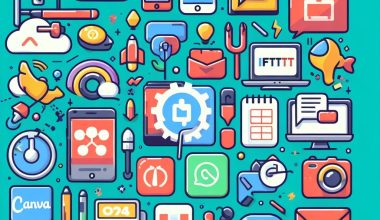Introduction
In one of my previous articles, I talked about 20 Essential Tools and Resources for your Digital Toolkit some of which are tools that will be relevant to this topic. However, in this article, we will delve more into what tools you can use and how to use them to ensure remote productivity of employees while they are working from home and monitor them effectively. You don’t need to be scared again (Lol) whether they are working or not. You can easily know and then take the necessary actions.
The rise of remote work
Remote work has become increasingly popular in recent years, with more and more employees choosing to work from home or other remote locations. This trend has been accelerated by the COVID-19 pandemic, which forced many businesses to adopt remote work policies. Some companies even went further by closing down some or all of their offices. Some adopted the hybrid mode where certain employees come to work on certain number of days or certain days of the week. While the rest due to fear of employees not being productive have remained with the onsite model of work.
Challenges of managing remote employees
Managing remote employees can present a number of challenges for managers. These challenges include:
- Communication: It can be more difficult to communicate with remote employees than with employees who are in the office. Managers need to make sure that they are communicating regularly with their remote employees and that they are using effective communication tools.
- Collaboration: Collaboration can also be more challenging for remote teams. Managers need to find ways to facilitate collaboration among remote employees, such as using video conferencing and project management tools.
- Productivity: It can be difficult to monitor the productivity of remote employees. Managers need to find ways to track employee productivity and make sure that remote employees are on task.
Importance of ensuring remote employee productivity
Ensuring remote employee productivity is important for businesses of all sizes. When remote employees are productive, it can lead to increased profits, improved customer service, and a more positive work culture.
Strategies for effectively monitoring remote employees
There are a number of strategies that managers can use to effectively monitor remote employees. These strategies include:
- Setting clear expectations and goals: Managers should set clear expectations and goals for their remote employees. This will help remote employees to stay on track and be more productive. eg. Monthly and Weekly goals broken down into tasks.
- Communication tools for remote team collaboration: Managers should provide remote employees with the tools they need to communicate and collaborate effectively. This may include video conferencing, project management tools, and instant messaging tools. eg. Microsoft Teams, Slack
- Implementing time tracking and productivity tools: Time tracking and productivity tools can help managers track the productivity of their remote employees. This information can be used to identify areas where remote employees may need additional support.
- Providing resources and support for remote employees: Managers should provide remote employees with the resources and support they need to be successful. This may include access to training materials, technical support, and other resources.
- Training and development for remote team members: Managers should provide remote team members with opportunities for training and development. This will help remote employees to stay up-to-date on the latest trends and technologies.
- Building trust and fostering a positive remote work culture: Managers should build trust with their remote employees and foster a positive remote work culture. This can help remote employees to feel more connected to their team and the company. Eg. Remote Team Bonding activities.
- Reward and Punishment: Managers should find ways to reward remote productive employees like granting them a day off and also punish those that are not productive like making them come to the office for a certain number of days.
Tools/Apps that can help effectively monitor remote employees
-
Apploye
It is a time-tracking app and software that helps you monitor your employees and manage your projects. Here are some of its features:
- Time Tracking: You can track the time spent by you and your team on different tasks and projects from desktop, mobile, web, or browser apps.
- Timesheet and Payroll: You can view and approve timesheets, and pay your team according to the hours worked using the app.
- Projects and Tasks: You can create and assign tasks to your employees, and track the progress and budget of your projects.
- Client and Invoice: You can create your own client database and invoice them based on the work done.
- Remote-Track: You can optionally monitor the productivity and activity of your remote staff and contractors through a live feed, screenshots, and URL tracking.
-
Asana
It is a work management platform that helps teams collaborate on projects and tasks. Here are some key points about Asana:
- Goals: Asana lets you set and track goals for your organization, and see how they relate to your work.
- Workflows: Asana helps you plan, organize, and execute your work with different views, such as lists, boards, timelines, and calendars.
- Integrations: Asana connects with over 200+ tools, such as Google Sheets, Zoom, and Everhour, to enhance your productivity and communication.
- Customers: Asana is used by 80% of Fortune 100 companies and millions of other teams across various industries and functions.
-
Hive
It is a work management platform that helps teams collaborate on projects and tasks. It offers features such as goals, workflows, integrations, and team collaboration. Hive lets you set and track goals for your organization, and see how they relate to your work. It helps you plan, organize, and execute your work with different views, such as lists, boards, timelines, and calendars. Hive connects with over 200+ tools, such as Google Sheets, Zoom, and Everhour, to enhance your productivity and communication. Hive is used by 80% of Fortune 100 companies and millions of other teams across various industries and functions
-
Trello
It is a visual work management tool that empowers teams to ideate, plan, manage, and celebrate their work together in a collaborative, productive, and organized way. It helps you simplify and standardize your team’s work process in an intuitive way. Trello organizes your projects into boards, lists, and cards, and lets you customize them according to your needs. Here are some key features of Trello:
- Boards: A board represents a place to keep track of information — often for large projects, teams, or workflows. Whether you are launching a new website, tracking sales, or planning your next office party, a Trello board is the place to organize tasks, all the little details, and most importantly—collaborate with your colleagues.
- Lists: Lists keep cards, or specific tasks or pieces of information, organized in their various stages of progress. Lists can be used to create a workflow where cards are moved across each step in the process from start to finish, or simply act as a place to keep track of ideas and information.
- Cards: Cards are used to represent tasks and ideas. A card can be something that needs to get done, like a blog post to be written, or something that needs to be remembered, like company vacation policies. Cards can be customized to hold a wide variety of useful information by clicking on them. Drag and drop cards across lists to show progress.
- Integrations: Trello connects with over 200+ tools, such as Google Sheets, Zoom, and Everhour, to enhance your productivity and communication.
- Customers: Trello is used by 80% of Fortune 100 companies and millions of other teams across various industries and functions.
If you’re new to Trello, you can learn more about its features and how to use them in the Trello 101 guide.
-
Chanty AI
It is a team communication platform that offers a variety of features, including messaging, video conferencing, task management, and AI-powered tools to help teams be more productive and collaborative.
Here are some of the key features of Chanty AI:
- Messaging: Chanty AI offers a variety of messaging features, including one-on-one and group chats, file sharing, and threaded conversations.
- Video conferencing: Chanty AI offers built-in video conferencing, so teams can easily meet and collaborate face-to-face.
- Task management: Chanty AI offers a simple but effective task management system, so teams can track their work and progress towards their goals.
- AI-powered tools: Chanty AI offers a variety of AI-powered tools, such as a smart search function, automatic translation, and task recommendations, to help teams be more productive and efficient.
Chanty AI is a good choice for teams of all sizes, from small businesses to large enterprises. It is easy to use and offers a variety of features that can help teams be more productive and collaborative.
Here are some of the benefits of using Chanty AI:
- Increased productivity: Chanty AI’s AI-powered tools can help teams to be more productive and efficient. For example, the smart search function allows teams to quickly find the information they need, and the task recommendations can help teams stay on track and avoid distractions.
- Improved collaboration: Chanty AI’s messaging, video conferencing, and task management features make it easy for teams to collaborate and work together effectively.
- Reduced costs: Chanty AI is a subscription-based service, which means that teams can avoid the upfront costs of traditional team communication software.
Overall, Chanty AI is a powerful and versatile team communication platform that can help teams of all sizes to be more productive and collaborative.
Conclusion
Managing remote employees can be challenging, but it is important for businesses to ensure that their remote employees are productive. By following the strategies outlined above and using any of the tools, managers can help their remote employees to be more productive and successful.
Additional tips for ensuring remote employee productivity
- Encourage regular breaks and time away from the computer.
- Promote a healthy work-life balance.
- Recognize and reward remote employees for their accomplishments.
- Create a sense of community among remote employees.
- Be flexible and understanding.
By following these tips, managers can create a positive and productive remote work environment for their employees which in turn can help save companies money on office rent, office utilities and so much more. Feel free to share your thoughts.






